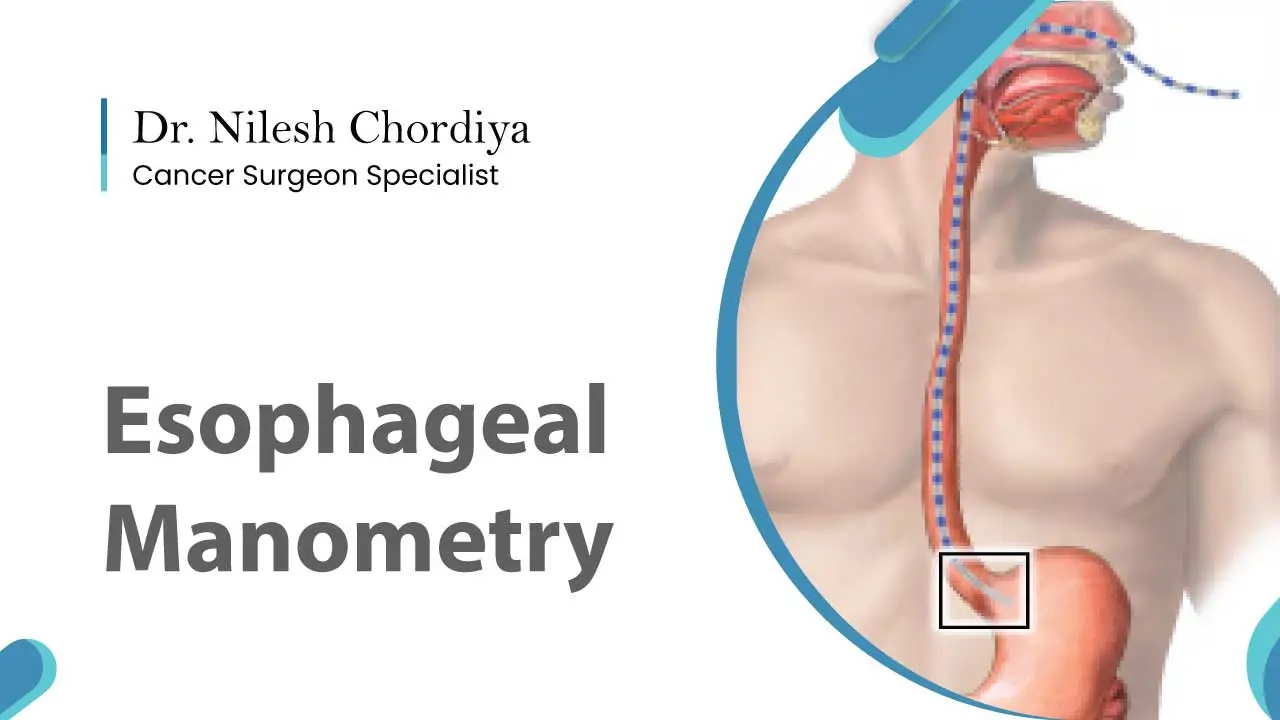Understanding Esophageal Manometry: Detectable Conditions and Clinical Significance

Maintaining a healthy esophagus is crucial for the overall well-being of our digestive system. The esophagus, a muscular tube that connects the mouth to the stomach, plays a vital role in facilitating the smooth passage of food and liquids. However, certain conditions can affect the functioning of the esophagus, leading to discomfort and potential health implications. To accurately diagnose these conditions, oncologists may use a diagnostic procedure called esophageal manometry. Let’s explore what esophageal manometry can detect and its clinical significance in diagnosing esophageal disorders.
Esophageal Manometry Explained
Esophageal manometry is a diagnostic procedure that measures the motility and function of the esophagus. It involves the insertion of a thin, flexible catheter equipped with sensors into the esophagus. These sensors record muscle contractions, coordination, and pressure throughout the esophagus.
By assessing esophageal motility, doctors can gain valuable insights into various aspects of esophageal function, such as the efficiency of muscle contractions and the coordination of swallowing. This information is crucial for diagnosing and monitoring several esophageal conditions.
Conditions Detectable Through Esophageal Manometry
Gastroesophageal Reflux Disease (GERD)
Gastroesophageal Reflux Disease, commonly known as GERD, is characterised by the backward flow of stomach acid into the esophagus. Esophageal manometry can detect abnormal reflux patterns, allowing doctors to assess the severity of GERD and differentiate it from other conditions with similar symptoms. This information guide treatment decisions and improve patient outcomes.
Achalasia
Achalasia is a rare esophageal motility disorder where the lower esophageal sphincter (LES) fails to relax properly, causing difficulty in food passage. Esophageal manometry is crucial in identifying impaired esophageal peristalsis and LES dysfunction in patients with suspected achalasia. Doctors can accurately diagnose this condition through manometry and recommend appropriate treatment options.
Esophageal Spasms
Esophageal spasms are involuntary contractions of the esophageal muscles that can cause chest pain and difficulty swallowing. Esophageal manometry helps diagnose spastic contractions and assess esophageal muscle coordination, enabling doctors to formulate effective treatment plans tailored to the patient’s specific needs.
Nutcracker Esophagus
The Nutcracker esophagus is a condition characterised by high-amplitude contractions in the esophageal muscles. Esophageal manometry plays a crucial role in detecting these abnormal contractions, which can help explain the chest pain symptoms experienced by patients. Accurate diagnosis through manometry allows doctors to develop targeted treatment strategies.
Ineffective Esophageal Motility
Ineffective esophageal motility refers to weak or uncoordinated muscle contractions in the esophagus, resulting in difficulties with swallowing. Esophageal manometry is instrumental in identifying this condition by measuring the strength and coordination of esophageal contractions. Understanding the extent of ineffective esophageal motility helps doctors determine appropriate treatment strategies to improve swallowing function.
Need help? Talk to Our Cancer Surgeon
Get the Most Effective Cancer Treatment in Mumbai India by Consulting Dr. Nilesh Chordiya, One of the Top Cancer Surgeons in Mumbai.
Clinical Significance and Diagnostic Process
Accurate diagnosis is crucial for the effective treatment of esophageal disorders. Esophageal manometry is vital in the diagnostic process by providing valuable information about esophageal motility and function. It aids doctors and gastroenterologists in making informed decisions about treatment options and helps monitor the progress of patients undergoing treatment.
To ensure the most effective use of esophageal manometry in the diagnostic process, here are some actionable steps for both oncologists and patients:
1. Consultation with oncologists: If you are experiencing symptoms such as difficulty swallowing, chest pain, or persistent acid reflux, schedule an appointment with your oncologists. They will evaluate your symptoms and determine if esophageal manometry is necessary for further diagnosis.
2. Patient Education: As a patient, take the time to educate yourself about esophageal manometry and the conditions it can detect. Research reputable sources, consult medical professionals, and ask questions about concerns or doubts.
3. Pre-Procedure Preparation: Follow the pre-procedure guidelines provided by your oncologists. This may involve fasting for a specific duration, discontinuing certain medications, and avoiding smoking. Adhering to these instructions ensures accurate test results.
4. communication with oncologists: Discuss any pre-existing medical conditions, allergies, or concerns with your oncologists before the procedure. Providing them with a comprehensive medical history is essential to avoid complications during the test.
5.procedure Comfort: During the procedure, you may experience a temporary discomfort or gag reflex when the catheter is inserted. Communicate any discomfort to the oncologists performing the test, as they can make adjustments to minimise your discomfort.
6.post-Procedure Care: After the procedure, follow any post-procedure instructions provided by your oncologists. This may include restrictions on eating or drinking for a specific period or resuming normal activities immediately. It is essential to follow these guidelines for optimal recovery.
7. Treatment Plan Discussion: Once the results of the esophageal manometry are obtained, consult with your oncologists to discuss the findings and develop a personalised treatment plan. Depending on your specific condition, this may involve lifestyle modifications, medication, or further diagnostic tests.
Other Applications of Esophageal Manometry
In addition to the conditions mentioned above, esophageal manometry can also assist in diagnosing other esophageal disorders, such as scleroderma and eosinophilic esophagitis. These conditions affect the esophageal motility and function in different ways, and esophageal manometry helps in their accurate identification, leading to appropriate treatment strategies.
Apart from diagnostics, esophageal manometry can also monitor treatment effectiveness and track progress in patients undergoing therapy for esophageal disorders. Regular follow-up tests can help oncologists evaluate the success of the treatment plan and make any necessary adjustments.
Conclusion
Esophageal manometry is a valuable diagnostic tool that plays a crucial role in identifying various esophageal conditions. By measuring esophageal motility and function, doctors can accurately diagnose conditions such as GERD, achalasia, esophageal spasms, nutcracker esophagus, and ineffective esophageal motility. This information guides treatment decisions and helps improve patient outcomes.
Through collaboration between oncologists and patients, esophageal manometry can be effectively used in the diagnostic process. By following actionable steps such as consultation with oncologists, patient education, pre-procedure preparation, effective communication, and post-procedure care, patients can ensure a smooth and successful experience.
If you suspect you have an esophageal condition or are experiencing symptoms such as difficulty swallowing, chest pain, or acid reflux, take the proactive step of consulting with your oncologists. They can assess your symptoms, recommend appropriate diagnostic tests such as esophageal manometry, and develop a personalized treatment plan to address your needs.
Remember, maintaining a healthy esophagus is essential for overall digestive health, and early detection and treatment of esophageal conditions can significantly improve your quality of life. Take the first step towards better digestive health by seeking medical attention and exploring the diagnostic benefits of esophageal manometry.
APPOINTMENT FORM

About Author
Related Blogs
Cervical Cancer vs. Uterine Cancer: What Is the Difference?
Cervical cancer starts in the cervix from HPV, while uterine cancer begins in the uterus lining due to hormonal imbalance.
Connection Between HPV and Cervical Cancer
HPV is the main cause of cervical cancer, but vaccines and regular screening can help prevent it before it turns serious.
How Long Can You Have Cancer Without Knowing?
You can have cancer for months or years without symptoms. Learn why early detection and routine check-ups are key to staying safe and healthy.


